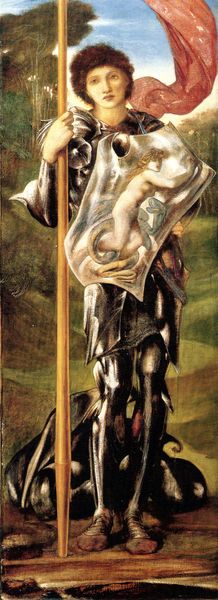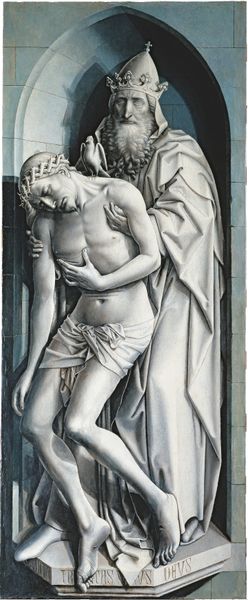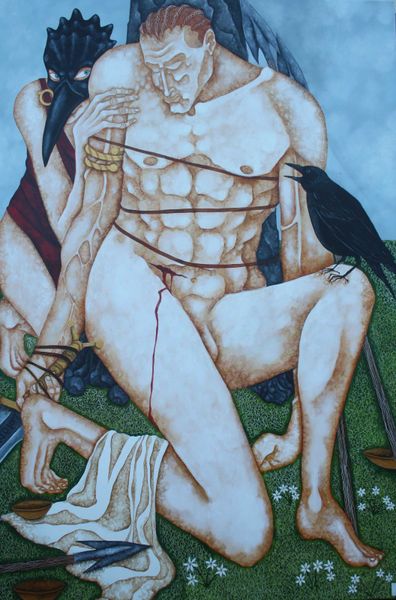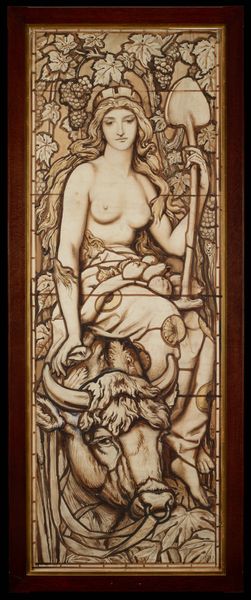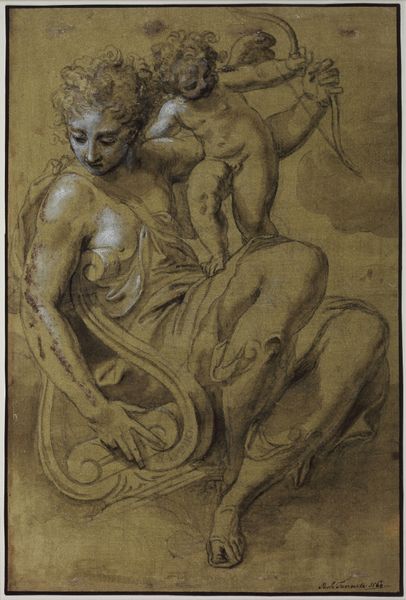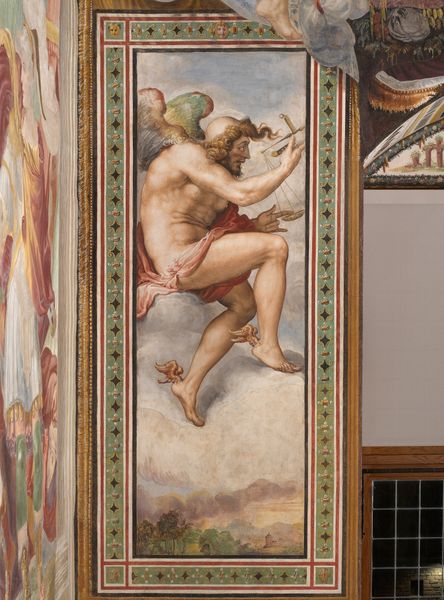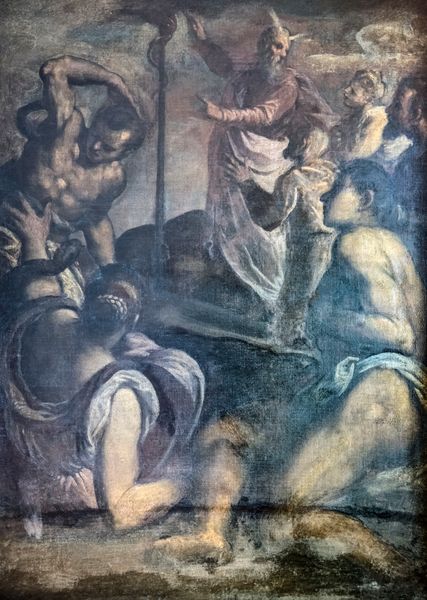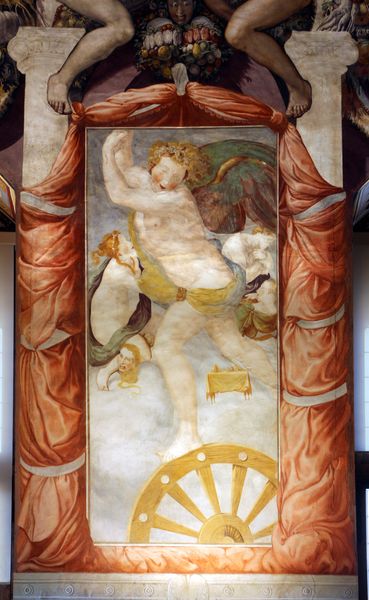
Annunciation (detail) 1534
0:00
0:00
francescoderossifrancescosalviaticecchino
San Francesco a Ripa, Rome, Italy
carving, oil-paint
#
carving
#
oil-paint
#
mannerism
#
figuration
#
oil painting
#
genre-painting
#
history-painting
#
italian-renaissance
Copyright: Public domain
Curator: Well, what grabs your attention right away? Editor: The sheer physicality, honestly. The figure seems almost bursting out of the painted frame. The lighting really accentuates the musculature, giving it a monumental feel, even in this detail. Curator: That’s a classic Mannerist trick. The exaggeration and dynamism you notice are hallmarks of the style, a move away from the High Renaissance ideals. This comes from a larger painting, “The Annunciation,” dating to 1534 by Francesco Salviati—also known as Cecchino—located in San Francesco a Ripa, Rome. It's executed in oil. Editor: And that oil paint gives such depth! You can really get lost in the folds of fabric in the background too. The interplay between that vibrant blue and the stark carving... Curator: The setting of the Annunciation, usually so serene, is being charged with a new political meaning. Remember, the Church was keen to reassert its power, this artist wants you to feel something—he wants this imagery to resonate within Rome itself. Editor: The muscular figure and winged creature contrast sharply with the smoothness of the drapery. Are we to take this "carving" literally? Is it sculpture or perhaps a painting made to look like it is coming off of the building? Curator: This interplay between illusion and reality is no accident. Salviati deliberately challenges the viewer's perception, creating a sense of unease and ambiguity. Remember the period as Rome recovered from war and faced questions of succession of leadership, from the Medici. Artists felt they were creating meaning on this next turn for Rome itself, not simply inheriting the power of the classics or the Church itself. Editor: That’s fascinating! To consider this artwork a symbol of transformation but in a very active, even agitated state rather than serene or devotional feels very right. It gives that sculpture such power and even immediacy. Curator: Absolutely. It reminds us that art doesn’t exist in a vacuum. It engages with its social and political context, reflecting the anxieties and aspirations of the time. Editor: And seeing the work divorced from its place—as we find it in our catalogue—offers another new lens on this moment in art and civic engagement. Curator: Precisely.
Comments
No comments
Be the first to comment and join the conversation on the ultimate creative platform.
